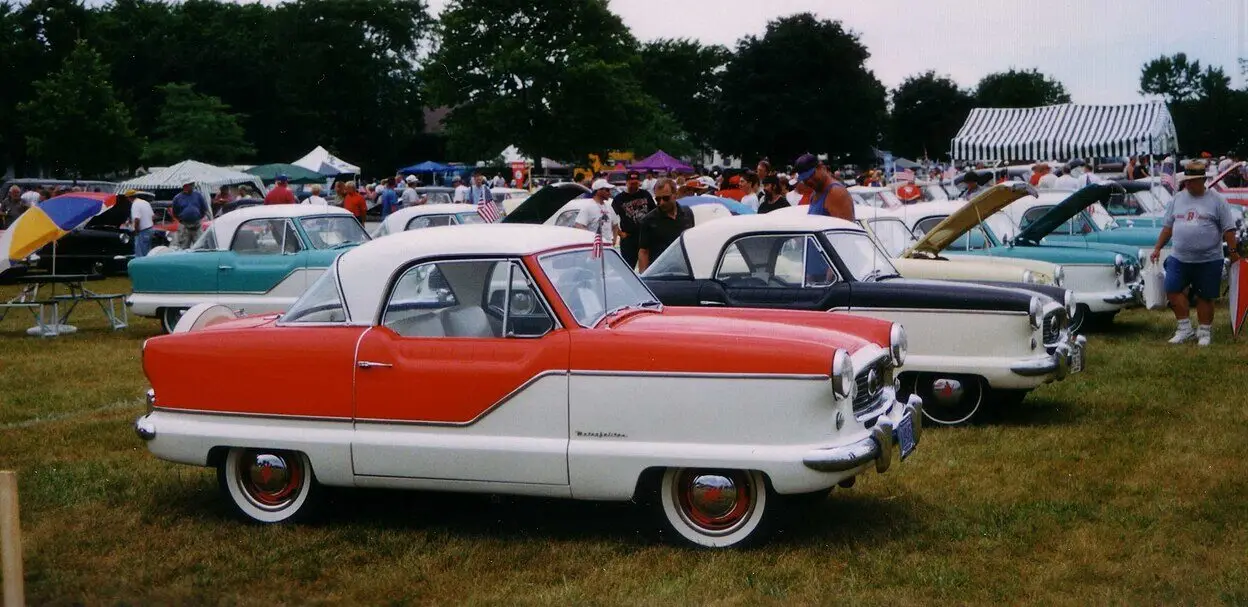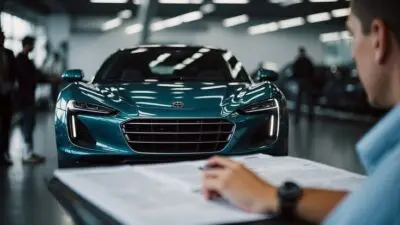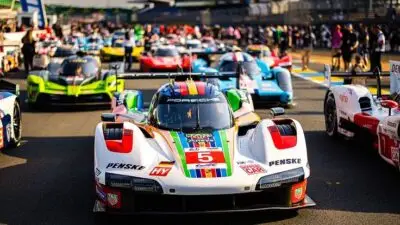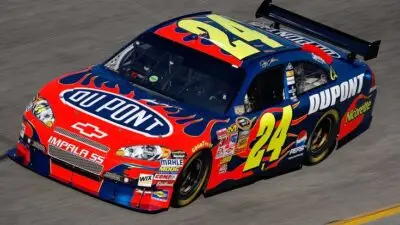Car clubs have been a vibrant part of automotive culture since the early days of automobiles. These social groups bring together people who share a passion for cars, whether they’re vintage collectors, speed enthusiasts, or modern vehicle fans. Car clubs have played a crucial role in preserving automotive history through restoration projects and knowledge sharing that keeps our mechanical heritage alive for future generations.

The social aspect of car clubs cannot be overstated. Beyond the vehicles themselves, these communities create lasting friendships, support networks, and educational opportunities for members. From the 1950s street racing culture to today’s global online forums, car enthusiasts have always found ways to connect and celebrate their shared interest.
What started as small gatherings has evolved into a worldwide phenomenon that spans generations. Modern car clubs organize shows, drives, and charity events while maintaining the core values of automotive enthusiasm. These communities continue to adapt to changing technologies and trends while honoring the traditions that made car culture special from the beginning.
Key Takeaways
- Car clubs create social bonds through shared automotive passion while preserving important vehicle history and restoration techniques.
- The evolution of automotive enthusiast groups spans from local meetups to international organizations with diverse interests and activities.
- Technology has transformed how car communities connect while car shows and restoration projects remain central to the enthusiast experience.
The Birth of Car Clubs and Early Automobile Enthusiasm

The emergence of car clubs coincided with society’s transition from horse-drawn transportation to motorized vehicles. These early gatherings formed the foundation of what would become a lasting cultural phenomenon centered around automotive passion.
From Horse-Drawn Carriages to Motor Age
The late 19th century marked a dramatic shift in transportation as automobiles began replacing horse-drawn carriages. This transition sparked curiosity and excitement among early adopters. By 1900, automobiles were no longer just oddities but emerging status symbols for the wealthy.
Early automobiles were challenging to operate and maintain. Owners often needed mechanical knowledge and troubleshooting skills just to complete basic trips. This shared struggle created natural bonds between automobile owners.
The difficulties of early motoring created a need for mutual assistance. Enthusiasts would gather informally to exchange maintenance tips, discuss driving techniques, and share their experiences with this revolutionary technology.
Formation of the First Car Clubs
Britain’s Veteran Car Club, founded in 1896, is widely considered the first car club. It brought together owners of vehicles built before 1905, establishing a precedent for organized automotive enthusiasm.
In America, automobile clubs emerged in major cities during the early 1900s. These organizations served multiple purposes:
- Advocating for better roads
- Sharing technical knowledge
- Organizing social gatherings
- Promoting automotive tourism
Throughout the early motor age, car clubs became instrumental in shaping public perception of automobiles. They helped transform cars from dangerous novelties to essential components of modern life.
As automobiles became more reliable, car clubs evolved in the 1950s and 60s to focus less on practical necessity and more on customization, speed, and style. This shift marked the beginning of modern car culture as we know it today.
The Golden Era of Classic Car Clubs

The 1940s through 1960s marked a transformative period for automotive enthusiasm in America. Car clubs flourished as vehicles shifted from mere transportation to symbols of identity and freedom.
Post-World War II Boom in Car Ownership
After World War II ended, America experienced an unprecedented economic expansion. The manufacturing capabilities developed during wartime quickly converted to civilian production, with automotive companies leading the charge.
Ford Motor Company and Chrysler, along with other manufacturers, ramped up production to meet growing consumer demand. In 1949 alone, Americans purchased over 5 million new vehicles, creating the foundation for a booming car culture.
Car clubs began forming in suburbs across America. These groups offered a social outlet for returning veterans and new middle-class families alike. Members would gather regularly to discuss maintenance tips, show off modifications, and organize weekend drives.
By the early 1950s, specialized clubs emerged focusing on particular makes and models. The first Thunderbird Club formed in 1955, just months after Ford’s sporty new model hit showrooms.
Rise of the American Classics
The late 1950s and 1960s witnessed the birth of what we now consider the golden age of automotive design and performance. This era produced the most celebrated American classics that still command attention today.
Muscle cars dominated the scene, with Chrysler’s HEMI-powered vehicles and Ford’s Mustang creating intense brand loyalty. The 1960s muscle car phenomenon sparked dedicated clubs for specific models, where members could share technical knowledge and parts.
Car clubs became instrumental in preserving automotive history through restoration and maintenance of these classics. Members would pool resources to locate rare parts and document correct factory specifications.
Throughout the 1960s, these clubs expanded beyond local gatherings to regional and national meets. Annual conventions would draw thousands of enthusiasts who traveled cross-country to display their prized classics and connect with fellow hobbyists.
The camaraderie of these clubs helped establish many of the car show traditions that continue today, including judging standards, award categories, and the overall format of automotive exhibitions.
Social Dynamics and Growth of Car Clubs

Car clubs transformed from small local gatherings into powerful social movements that shaped automotive culture across geographic boundaries. The expansion of these communities reflects broader social changes and the universal appeal of automotive enthusiasm.
Suburban Expansion and Car Clubs
The post-war suburban boom of the 1950s and 1960s created ideal conditions for car clubs to flourish. As families moved to spacious suburban neighborhoods, garages and driveways became workshops and showcases for automotive projects.
Weekend meetups in suburban parking lots became regular fixtures where members could display their vehicles and share technical knowledge. These gatherings fostered strong social bonds and created support networks for enthusiasts.
Car clubs became particularly popular for those interested in modifying vehicles – chopping, channeling, and splicing different parts to create unique builds. In Southern California, this culture thrived with year-round favorable weather conditions that allowed frequent outdoor meets.
Many suburban clubs organized family-friendly events that included picnics, parades, and charity fundraisers, making automotive enthusiasm a community-wide activity rather than just a hobby for individual owners.
International Spread and Diversification
Car club culture spread globally, adapting to local automotive preferences and social customs. European clubs often focused on regional manufacturers like BMW, Mercedes, and Fiat, while Japanese clubs celebrated domestic brands and modification styles.
The Jeep community exemplifies this international expansion, with dedicated clubs appearing on every continent. These groups organize off-road expeditions that combine adventure with camaraderie, often tackling challenging terrain together rather than competing against each other.
Car enthusiasts worldwide formed tight-knit communities around shared interests, regardless of cultural differences. These international connections were strengthened through:
- Annual international meets and conventions
- Exchange programs between sister clubs
- Collaborative restoration projects
- Shared technical resources and parts networks
The internet eventually accelerated this global connection, allowing enthusiasts from different countries to share ideas, techniques, and passion regardless of physical distance.
Automotive Restoration and Preservation

Automotive restoration has become a cornerstone activity within car culture, allowing enthusiasts to breathe new life into classic vehicles while honoring automotive heritage. The careful process of returning cars to their original glory connects modern enthusiasts to automotive history.
Role of Car Clubs in Vehicle Restoration
Car clubs provide essential support networks for members undertaking challenging restoration projects. These communities offer valuable knowledge sharing, with experienced members mentoring newcomers on proper techniques and authentic parts sourcing.
Many clubs maintain libraries of technical manuals, workshop guides, and period materials that would be difficult for individuals to access alone. This collective expertise helps ensure restorations meet historical accuracy standards.
Car clubs often organize specialized workshops and technical sessions where members can learn restoration skills like metalworking, upholstery repair, and engine rebuilding. These hands-on learning opportunities preserve traditional craftsmanship that might otherwise disappear.
Some clubs also maintain shared workshop spaces with specialized tools that would be prohibitively expensive for individual members to purchase. This collaborative approach makes complex restorations more accessible to enthusiasts of various skill levels.
Preserving Automotive History
Restoration efforts contribute significantly to cultural preservation. Vintage car clubs actively document automotive history through detailed records, photographs, and oral histories from original owners or mechanics.
Many clubs partner with museums, universities, and historical societies to create public exhibitions that share automotive heritage with wider audiences. These collaborations help contextualize classic cars within their historical periods.
Classic car clubs play a crucial role in advocating for the protection of rare vehicles. Their preservation efforts ensure future generations can appreciate authentic automotive design evolution.
Educational initiatives like those at McPherson College, home to America’s first four-year automotive restoration program, demonstrate how car clubs help formalize restoration knowledge into structured learning opportunities. These programs train the next generation of restorers.
The Evolution of Car Enthusiast Publications

Car publications have played a crucial role in connecting enthusiasts and spreading automotive knowledge. These printed materials helped build communities long before the internet existed.
From Newsletters to Magazines
The earliest car clubs in the 1920s and 1930s typically communicated through simple typewritten newsletters. These basic publications shared meeting times, event details, and technical tips among members.
By the 1950s, many club newsletters had evolved into more sophisticated formats with photographs and improved layouts. Some larger clubs began producing professionally printed materials that resembled small magazines.
The 1960s saw the rise of dedicated automotive enthusiast magazines that catered to specific interests within car culture. Publications like Hot Rod, Road & Track, and Car Craft became bibles for their respective communities.
The 1980s and 1990s brought further specialization, with magazines focusing on specific makes, models, or automotive subcultures. These publications often featured:
- Technical how-to articles
- Coverage of local and national events
- Classified sections for parts trading
- Feature stories on notable members’ vehicles
The Importance of Print in Car Club Culture
Print publications created a tangible connection between car enthusiasts across geographical boundaries. Members eagerly awaited each issue, preserving them as reference materials and historical documents.
Magazines and newsletters served as platforms for shared knowledge, helping standardize restoration techniques and modification approaches. Many car collectors built extensive libraries of publications that guided their projects.
Club publications also documented the evolution of automotive culture through the decades. They preserved stories, photographs, and technical information that might otherwise have been lost.
For many enthusiasts, seeing their vehicle featured in a club publication represented a significant achievement. This recognition reinforced membership value and strengthened community bonds.
High-quality publications also helped legitimize car clubs in the broader automotive world, often attracting new members and sponsorships through their professional appearance.
Influence of Technology on Modern Car Clubs

Technology has transformed how car enthusiasts connect and share their passion. Digital tools have expanded the reach of car clubs while creating new ways for members to document, modify, and celebrate their vehicles.
The Internet Era and Car Clubs
The rise of the internet dramatically changed how car clubs operate. Online forums replaced physical newsletters in the late 1990s, allowing members to share advice and photos instantly. These digital spaces made it easier for enthusiasts to find solutions to mechanical problems and connect with others who share their specific interests.
Social media platforms have further expanded car enthusiast communities beyond geographical limitations. A Mustang owner in Tokyo can now easily connect with fellow enthusiasts in Texas.
Virtual car meets became essential during the pandemic, with clubs hosting livestreamed events. Many clubs now maintain hybrid models, combining digital communication with traditional in-person gatherings.
Mobile apps dedicated to car clubs help coordinate drives, track attendance, and manage membership. These tools have streamlined administration, allowing club leaders to focus more on creating meaningful experiences.
Integrating Automotive Technologies
Modern car clubs increasingly focus on emerging automotive technologies. Electric vehicle groups have formed around brands like Tesla and Rivian, discussing range optimization and charging networks rather than traditional topics like carburetor tuning.
Connected car features have created new opportunities for clubs. Members share data about performance modifications through vehicle telemetry systems, comparing real-world results rather than relying on manufacturer claims.
Augmented reality apps now enable classic car enthusiasts to visualize modifications before making permanent changes. These technologies have transformed restoration projects, making them more accessible to newcomers.
The rise of autonomous driving technologies has sparked debate within traditional car clubs about the future of driving enthusiasm. Some clubs have embraced these changes, while others focus on preserving traditional driving experiences.
Car Shows and Competitive Events

Car shows and racing events have been the heartbeat of automotive enthusiasm since the early days of car clubs. These gatherings provide venues for members to display their prized vehicles and test their performance capabilities against others.
Local and National Car Showcases
The tradition of car shows began in the early 20th century as automobiles transitioned from novelties to status symbols. Local car clubs regularly organize weekend showcases in parking lots, parks, and downtown areas to display members’ vehicles.
These events range from casual “cars and coffee” meetups to highly organized judged competitions with specific categories like:
- Original/Restored
- Modified/Custom
- Classic (pre-1980)
- Modern Performance
- Special Interest
National car shows like the Detroit Autorama (est. 1953) and Goodguys Rod & Custom Association events attract thousands of enthusiasts annually. These larger gatherings often feature celebrity appearances, vendor booths, and special displays of rare vehicles.
Car shows serve as important social hubs where enthusiasts exchange restoration tips and preserve automotive history through their collective knowledge.
Racing and Performance Competitions
The pursuit of speed has been central to car club culture since the earliest automotive organizations. Early clubs often organized impromptu races on dry lake beds or closed country roads to test their vehicles’ capabilities.
As racing became more formalized, car clubs played crucial roles in establishing drag strips, oval tracks, and road courses. Many notable racing venues like Bonneville Salt Flats became legendary through club-organized events.
Popular competitive events include:
| Event Type | Description | Typical Participants |
|---|---|---|
| Drag Racing | Quarter-mile acceleration contests | Muscle cars, hot rods |
| Autocross | Timed runs through cone courses | Sports cars, tuner vehicles |
| Track Days | High-speed circuit driving | Performance cars, modified vehicles |
| Time Attack | Timed laps on road courses | Purpose-built race cars |
Many clubs also organize rallies and driving skills competitions that emphasize precision over raw speed. These events foster camaraderie while allowing members to develop their driving abilities in controlled environments.
Performance competitions have driven technological innovation as club members continually seek advantages through engine modifications, weight reduction, and aerodynamic improvements.
Regulatory Impact on Car Clubs

Car clubs have faced numerous regulatory challenges that have shaped their activities and membership over the decades. These regulations have influenced everything from how cars can be modified to where club members can drive and gather.
Emissions Regulations and Car Modifications
Emissions regulations have significantly affected how car club members can modify their vehicles. In the 1970s, the Clean Air Act in the United States created new standards that made traditional hot rod modifications more difficult to implement legally. Car clubs had to adapt their building practices to meet these requirements or risk fines.
Many car clubs became instrumental in educating members about compliant modifications. They organized workshops on installing catalytic converters and modern fuel injection systems that could maintain performance while reducing pollution.
For owners of classics, these regulations posed unique challenges. Some states implemented exemptions for historic vehicles, which car clubs actively lobbied for to protect their hobby.
Recent years have seen even stricter emissions testing in urban areas, leading some clubs to focus on electric conversions or hybrid technologies.
Urban Development and Access to Highways
As cities grew and developed, car clubs lost many of their traditional gathering spots. Street racing, once common among certain clubs, became heavily policed as urban areas expanded and safety concerns mounted.
Highway development initially benefited car clubs, providing smooth surfaces for cruising events. However, increased traffic and speed regulations soon limited these activities.
Many cities enacted noise ordinances and anti-cruising laws that directly affected car club gatherings. These regulations forced clubs to move their meets to private property or designated event spaces.
Some forward-thinking clubs worked with local governments to create sanctioned events like closed-street car shows. These partnerships helped maintain the social aspects of car culture while addressing public safety concerns.
Car clubs increasingly play a role in urban planning discussions, advocating for designated areas where enthusiasts can safely gather without disrupting communities.
Iconic Car Clubs and Their Legacies

Car clubs have shaped automotive culture through their dedication to specific vehicles and driving experiences. These organizations have preserved automotive history while creating lasting communities around beloved brands and models.
Historic Car Clubs and Their Influence
The Antique Automobile Club of America was one of the first formal car clubs in the United States, founded in late 1935. This pioneering organization established the template for future clubs with its focus on preservation and appreciation of automotive history.
In the post-war era, brand-specific clubs gained popularity. The Ferrari Club of America, established in 1962, united enthusiasts of the Italian marque and helped cement Ferrari’s legendary status beyond racing circuits. Their meticulous documentation and restoration standards continue to influence how classic cars are preserved today.
Chrysler’s car clubs emerged during the muscle car era, celebrating models like the Charger and Challenger. These clubs maintained enthusiasm during the brand’s challenging periods and contributed to the eventual revival of these iconic nameplates.
Famous Models and Marques in Car Club History
The Jeep brand inspired some of the most passionate automotive communities, with clubs like Jeep Jamboree (founded 1953) creating off-road events that tested vehicles and built camaraderie. These gatherings helped establish Jeep’s reputation for rugged dependability and adventure.
RAM truck enthusiasts formed clubs celebrating the vehicle’s capability and customization potential. The RAM Heavy Haulers club, established in the 1980s, pioneered truck-specific events that combined practical demonstrations with social gatherings.
The Imperials Car Club became known for its elaborate car cruises and shows. Their events featured customized vehicles that demonstrated extraordinary craftsmanship and cultural expression.
Many clubs actively work in preserving automotive history through restoration projects and educational initiatives. Their documentation efforts and technical expertise have saved countless vehicles from being lost to time.
Frequently Asked Questions

Car clubs have shaped automotive culture for nearly a century while fostering deep social connections among enthusiasts. These organizations have evolved significantly while maintaining their core purpose of bringing people with shared passions together.
How have classic car clubs evolved from their origins to present day?
Classic car clubs began forming in the 1930s, with the Antique Automobile Club of America establishing in late 1935. Initially, these clubs were small, local gatherings of wealthy collectors focused primarily on preservation.
As automobiles became more accessible to the general public, car clubs expanded their membership and scope. The post-war era saw explosive growth in specialized clubs dedicated to specific makes and models.
Modern car clubs have embraced digital technology, combining traditional in-person meets with online communities. Many clubs now maintain active social media presences, virtual events, and digital archives that connect members across geographical boundaries.
What role have automobile clubs played in shaping social interactions among enthusiasts?
Car clubs created spaces where knowledge and passion for automobiles could be shared and celebrated. These gatherings fostered strong social bonds beyond mere appreciation of vehicles.
Members often developed lifelong friendships through regular meetings, rallies, and restoration projects. The collaborative environment encouraged mentorship, with experienced members guiding newcomers in mechanical skills and appreciation of automotive history.
Car clubs have traditionally functioned as intergenerational meeting grounds where enthusiasts of different ages and backgrounds connect through their shared passion. This social aspect has helped preserve automotive traditions across decades.
Can you describe the historical significance of car clubs in automotive culture?
Car clubs became crucial innovation hubs in the mid-20th century, particularly for building faster and customized vehicles. Many automotive trends like chopping, channeling, and splicing different parts originated within these communities.
The documentation and standards developed by car clubs have established important reference points for vehicle authenticity and restoration techniques. Their archives preserve vital information about automotive development and design.
During automotive culture’s formative years, car clubs helped establish the rituals and traditions that now define enthusiast gatherings. From concours events to cruise nights, these clubs standardized how enthusiasts celebrate their passion.
What are the impacts of automotive advancements on the traditions of car clubs?
Technological advancements have transformed how car clubs operate. Electric vehicles, computerized systems, and advanced manufacturing have required clubs to expand their knowledge base and adapt their expertise.
The rise of modern vehicles with complex electronics has created a divide in some traditional clubs. Many organizations now balance preserving skills for maintaining older vehicles while embracing knowledge needed for newer models.
Environmental considerations have influenced car club activities, with many groups now promoting sustainable practices while preserving classic vehicles. This adaptation ensures clubs remain relevant in a changing automotive landscape.
How do car clubs contribute to the preservation and appreciation of automotive history?
Car clubs play an instrumental role in preserving automotive history through meticulous restoration projects. Members often maintain vehicles to exacting historical standards, ensuring future generations can experience automobiles as they originally existed.
Many clubs maintain extensive archives of repair manuals, factory literature, and photographs that might otherwise be lost. These collections serve as valuable resources for researchers and enthusiasts.
Public exhibitions organized by car clubs educate broader audiences about automotive heritage. These events help cultivate appreciation for historical vehicles among people who might not otherwise be exposed to classic automobiles.
What are some notable contributions of car clubs to community and charity events?
Car clubs organize fundraising drives and charity shows that generate significant donations for local and national causes. These events combine automotive enthusiasm with community service.
During natural disasters and emergencies, some car clubs have mobilized to provide transportation assistance or deliver supplies to affected areas. Their organizational structure allows them to respond rapidly when communities need help.
Car clubs also establish youth mentorship programs. These programs help introduce automotive skills to new generations. Initiatives often include scholarships, apprenticeships, and educational workshops that preserve traditional knowledge while supporting community development.



